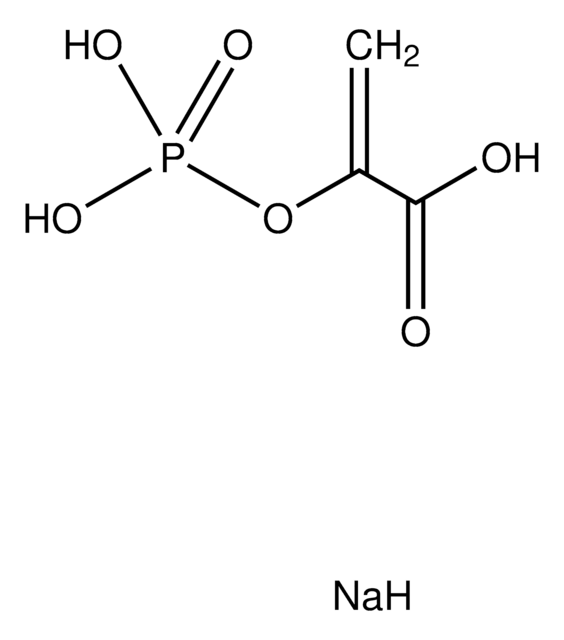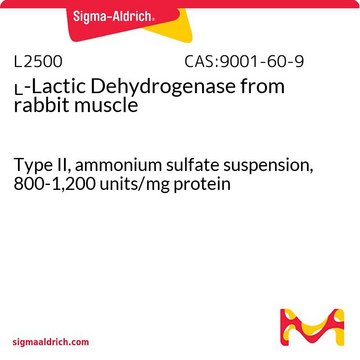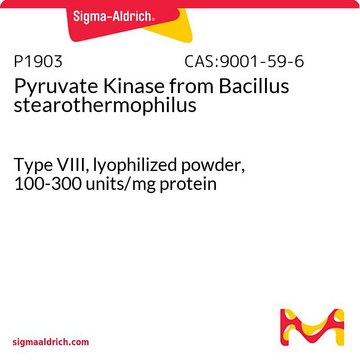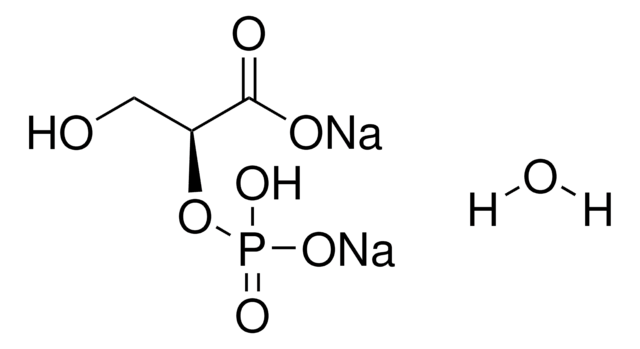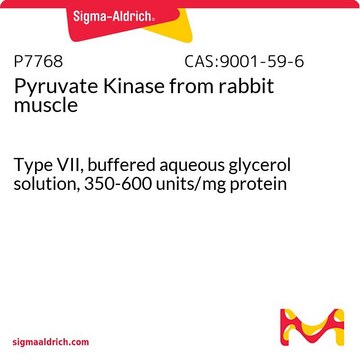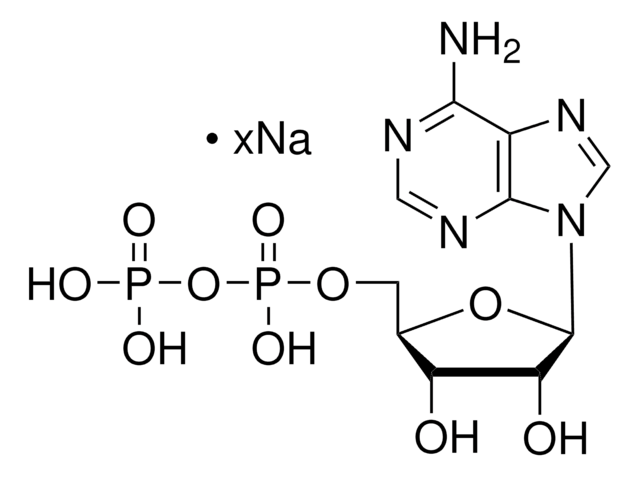P0564
Phospho(enol)pyruvic acid monosodium salt hydrate
≥97% (enzymatic)
Sinónimos:
2-(Phosphonooxy)-2-propenoic acid monosodium, mono-Sodium phosphoenolpyruvate hydrate, Monosodium phosphoenolpyruvate
About This Item
Productos recomendados
Análisis
≥97% (enzymatic)
formulario
powder
temp. de almacenamiento
−20°C
cadena SMILES
O.[Na+].OC(=O)C(=C)OP(O)([O-])=O
InChI
1S/C3H5O6P.Na.H2O/c1-2(3(4)5)9-10(6,7)8;;/h1H2,(H,4,5)(H2,6,7,8);;1H2/q;+1;/p-1
Clave InChI
YEQQMAFLJISSCR-UHFFFAOYSA-M
¿Está buscando productos similares? Visita Guía de comparación de productos
Categorías relacionadas
Acciones bioquímicas o fisiológicas
Código de clase de almacenamiento
11 - Combustible Solids
Clase de riesgo para el agua (WGK)
WGK 3
Punto de inflamabilidad (°F)
Not applicable
Punto de inflamabilidad (°C)
Not applicable
Equipo de protección personal
Eyeshields, Gloves, type N95 (US)
Elija entre una de las versiones más recientes:
¿Ya tiene este producto?
Encuentre la documentación para los productos que ha comprado recientemente en la Biblioteca de documentos.
Los clientes también vieron
Artículos
Review the 10 steps of glycolysis in the Embden-Meyerhof-Parnas glycolytic pathway. Easily compare reaction stages and buy the enzymes for your life science research.
Nuestro equipo de científicos tiene experiencia en todas las áreas de investigación: Ciencias de la vida, Ciencia de los materiales, Síntesis química, Cromatografía, Analítica y muchas otras.
Póngase en contacto con el Servicio técnico

